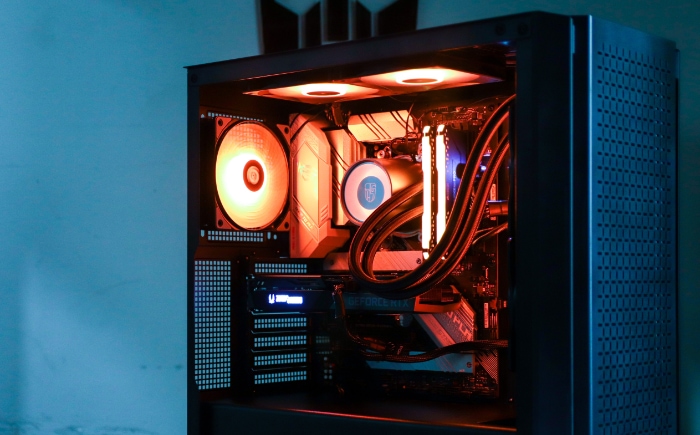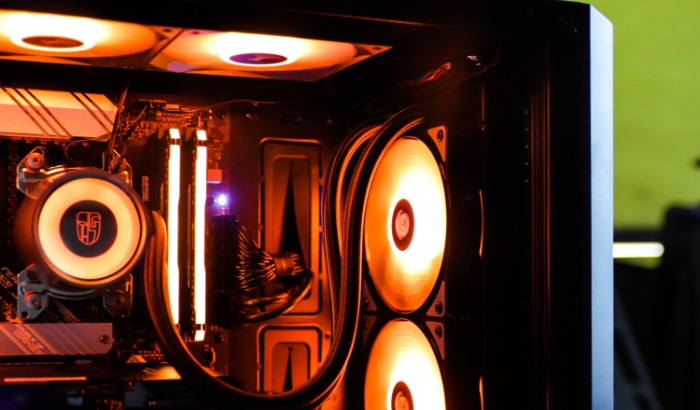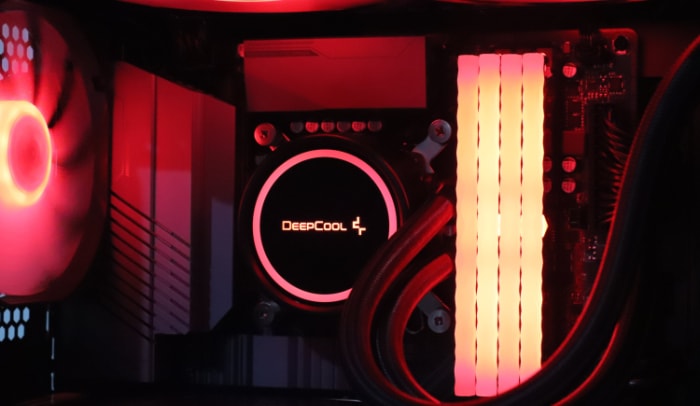AIO Liquid Coolers: How Long Do They Really Last?

In the world of personal computing, particularly in the realms of high-performance and gaming, effective thermal management is paramount. Ensuring that the components of your computer stay cool is a critical aspect of maintaining peak performance, preventing damage, and prolonging the lifespan of your machine.
One of the popular cooling solutions employed by PC enthusiasts is the All-In-One (AIO) Liquid Cooler.
However, like any other component of a computer, an AIO liquid cooler isn’t everlasting. It has a certain lifespan, beyond which its effectiveness can dwindle, potentially compromising the overall thermal management of your system.
Understanding how long an AIO liquid cooler can last and what factors might affect its longevity is vital for anyone looking to optimize their PC setup.
Understanding AIO Liquid Coolers
Before discussing longevity, it’s crucial to grasp the basics of how an AIO liquid cooler functions. It operates based on the principle of liquid cooling. In a typical setup, the process starts with the CPU or GPU generating heat.
This heat is then absorbed by the cooler’s cold plate, which is in direct contact with the processor. The absorbed heat is then transferred to the cooler’s liquid coolant, which circulates through a system of tubes to a radiator.
The radiator, often equipped with one or more fans, dissipates this heat into the surrounding environment, thereby keeping the processor at a manageable temperature.
Types of AIO Liquid Coolers
There are various types of AIO liquid coolers on the market, each designed to cater to different needs and system specifications. They can be categorized based on their size (which often corresponds to the size of the radiator and the number of fans), the type of coolant used, and the type of pump employed.
Common sizes you’ll find include 120mm, 240mm, 280mm, and 360mm. The type and quality of the pump, which facilitates the circulation of the coolant, can also vary from one model to another, influencing both performance and longevity.
Pros and Cons of Using AIO Liquid Coolers
AIO Liquid Coolers offer several benefits. They are generally more efficient at cooling than air coolers, making them suitable for high-performance or overclocked systems.
They also provide a cleaner look within the PC case due to their compact and unified design. Additionally, they put less physical stress on the motherboard because of their weight distribution.
On the flip side, AIO Liquid Coolers can be more expensive than traditional air coolers. They also contain more moving parts, which can increase the chance of something going wrong.
A significant disadvantage to note is the risk of leaks, although this is quite rare with modern AIOs which have improved design and build quality. Understanding these pros and cons is an important part of making an informed decision about whether an AIO liquid cooler is the right choice for your system.
Factors Determining the Lifespan of an AIO Liquid Cooler
Several factors influence the lifespan of an AIO liquid cooler, including its quality, usage conditions, maintenance, and design.
Quality of the Cooler
One of the most critical determinants of an AIO liquid cooler’s lifespan is its quality. The design, build, and materials used in the manufacturing of the cooler significantly affect how long it lasts.
Higher-end models, for instance, often come with better quality pumps, more durable tubing, and superior quality radiators which can extend their lifespan.
Usage Conditions
The conditions under which the cooler operates can also affect its longevity. This includes factors like the ambient temperature of the environment, the level of stress the cooler is under (i.e., how hard and how often your system is pushed to its limits), and the cleanliness of the environment.
For example, a system regularly exposed to high workloads in a hot and dusty environment may see its AIO cooler’s lifespan reduced compared to a system operating under less demanding conditions.
Maintenance and Care
Regular maintenance and care can prolong the lifespan of an AIO liquid cooler. This includes practices such as cleaning the dust filters regularly, ensuring the radiator is free of dust, and occasionally checking for any signs of leaks or wear and tear.
Product Design and Inherent Lifespan
Lastly, each AIO liquid cooler model has an inherent lifespan – a period that the cooler is expected to last under regular usage conditions.
This is usually a product of the cooler’s design, including factors such as the type of pump used, the quality of the seals, the coolant’s nature, and more. Most manufacturers indicate this lifespan in their product specifications, and it can serve as a useful guide for users.
The Typical Lifespan of an AIO Liquid Cooler

The average lifespan of an AIO liquid cooler tends to range from 5 to 7 years under normal usage conditions. This estimate is based on the lifespan of the pump, which is generally the component most likely to fail over time. It’s important to note, however, that this is just an average.
Some coolers might last significantly longer, while others may encounter issues within a shorter period.
Manufacturer Warranty Periods
A good indication of an AIO liquid cooler’s expected lifespan can often be gleaned from the manufacturer’s warranty period. Many manufacturers offer warranties that span several years, which is a testament to their confidence in the product’s durability.
However, it’s crucial to remember that warranties usually cover defects rather than wear and tear from regular use, so a longer warranty doesn’t necessarily guarantee a longer lifespan.
Variability in Lifespan
As we’ve already noted, the lifespan of an AIO liquid cooler can vary significantly based on a number of factors. These include the quality and design of the cooler, the conditions under which it is used, and how well it is maintained.
Even two identical coolers can have different lifespans if they’re used in different systems or under different conditions. As such, while the average lifespan gives us a rough idea of how long a cooler should last, it’s far from a hard and fast rule.
Signs that Your AIO Liquid Cooler Might be Failing
Detecting early signs of failure can help prevent potential damage and ensure your PC’s optimal performance.
Decreased Cooling Performance
One of the first signs that your AIO liquid cooler might be on its last legs is a noticeable decrease in its cooling performance. If your system components, particularly the CPU or GPU, are running hotter than they used to under similar workloads, it could indicate that your cooler isn’t working as efficiently as it should.
Noise and Other Operational Issues
Another common sign of a failing AIO liquid cooler is unusual noise. If you notice loud noises or an increase in noise level from the pump or fans, it might mean that these components are struggling. This could be due to a failing pump, worn-out bearings in the fans, or other issues.
Physical Signs such as Leaks or Build-up
Physical signs can often indicate a problem with your AIO liquid cooler. For instance, any leaks from the tubing or connectors are a clear sign of a problem. Similarly, if you notice a build-up of any kind inside the tubes or on the radiator, it could suggest that the coolant is not circulating as it should or that the cooler is not well-maintained.
These issues require immediate attention, as they could quickly lead to more severe problems, such as damage to your system components.
How to Extend the Life of an AIO Liquid Cooler

With the right practices, you can extend the life of your AIO liquid cooler beyond its average lifespan.
Regular Maintenance and Cleaning
Just like any other component of your PC, your AIO liquid cooler requires regular maintenance to ensure it lasts as long as possible.
Regularly cleaning dust from the radiator and fans can help maintain optimal cooling performance and prevent unnecessary wear on these components. Also, it’s beneficial to occasionally check the tubing for signs of wear or leaks.
Optimal Usage Practices
The way you use your PC can have a significant impact on the lifespan of your AIO liquid cooler. For instance, consistently pushing your system to its limits can place a lot of stress on the cooler, potentially shortening its lifespan.
On the other hand, allowing your system to run a bit cooler by not always operating at maximum performance can help extend the life of the cooler. This doesn’t mean you can’t ever push your system to its limits; instead, try to find a balance that works for you and your cooling needs.
Importance of Proper Installation
Proper installation of the AIO liquid cooler is vital in ensuring its longevity. This includes ensuring that the cooler is correctly positioned, the pump and fans are properly connected, and the cooler is securely and correctly mounted.
Improper installation can lead to issues such as leaks, inefficient cooling, and unnecessary stress on the cooler and other system components, potentially reducing the cooler’s lifespan.
Remember, every PC setup is unique, and your AIO liquid cooler’s longevity can be influenced by a combination of many factors. The key to prolonging its life is regular care, optimal usage, and vigilance for any signs of failure.
When and How to Replace an AIO Liquid Cooler
Eventually, a time will come when your AIO liquid cooler needs to be replaced.
Signs that Replacement is Necessary
As we’ve previously discussed, there are several signs that your AIO liquid cooler might be due for a replacement. This includes decreased cooling performance, unusual noises, and physical signs of wear or damage.
If you’re experiencing any of these issues and have ruled out other potential causes, it might be time to consider replacing your cooler.
Step-by-Step Process to Safely Replace an AIO Cooler
Replacing an AIO liquid cooler involves several steps. Always start by ensuring your system is powered off and disconnected from the power source.
Remove the old cooler: This typically involves disconnecting the fans and pump from the motherboard, unscrewing the cooler from the case, and detaching the cooler from the CPU or GPU. Be careful when handling the thermal paste.
Clean the CPU: Once the old cooler is removed, clean off any remaining thermal paste from the CPU using a soft cloth and isopropyl alcohol.
Install the new cooler: Apply new thermal paste to the CPU, then attach the new cooler following the manufacturer’s instructions. Ensure the pump is securely attached to the CPU, the fans and radiator are installed correctly, and all connections are made to the motherboard.
Test the new installation: Once the new cooler is installed, turn on your PC and monitor the temperature of your CPU or GPU to ensure the new cooler is working correctly.
Remember, every AIO liquid cooler is a bit different, so always refer to the manufacturer’s instructions when installing a new cooler.
Reliable AIO Cooler Brands and Models
When choosing a new AIO liquid cooler, there are several reliable brands to consider. Companies like Corsair, NZXT, and Cooler Master are well-known for their high-quality AIO coolers.
The right model for you will depend on your specific needs, including the size of your case, your cooling requirements, and your budget. It’s always a good idea to read reviews and check out user experiences before making your decision.
Conclusion
Understanding the lifespan of an All-In-One liquid cooler is crucial for anyone seeking to optimize their PC setup, whether for gaming, high-performance computing, or even everyday use.
With an average lifespan ranging from 5 to 7 years, and factors such as the cooler’s quality, usage conditions, maintenance, and inherent design playing significant roles in determining this lifespan, an AIO liquid cooler is undoubtedly a long-term investment.
Spotting signs of a failing cooler, such as decreased cooling performance, unusual noise, or physical signs of wear, and knowing when and how to replace it, are crucial to preventing potential damage to your system and maintaining optimal performance.
Furthermore, extending the life of your AIO liquid cooler is often a matter of regular maintenance, optimal usage, and proper installation, all of which contribute to ensuring your cooler and, consequently, your PC, run smoothly for as long as possible.
In the dynamic and constantly evolving world of PC components, staying informed and understanding your system’s needs are your best tools. We hope this comprehensive guide has given you valuable insights into the lifespan of AIO liquid coolers and how to maximize their utility throughout their life.


